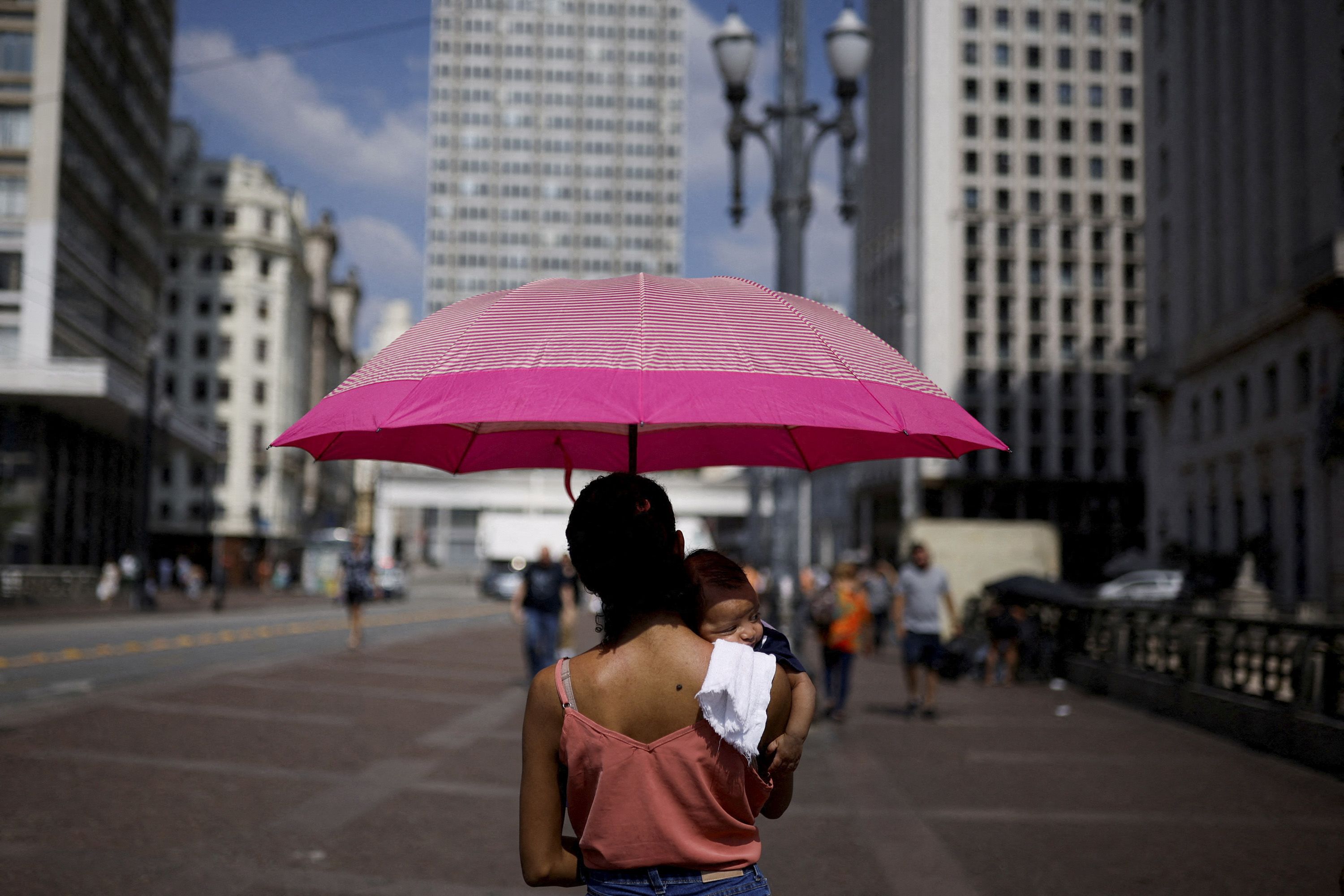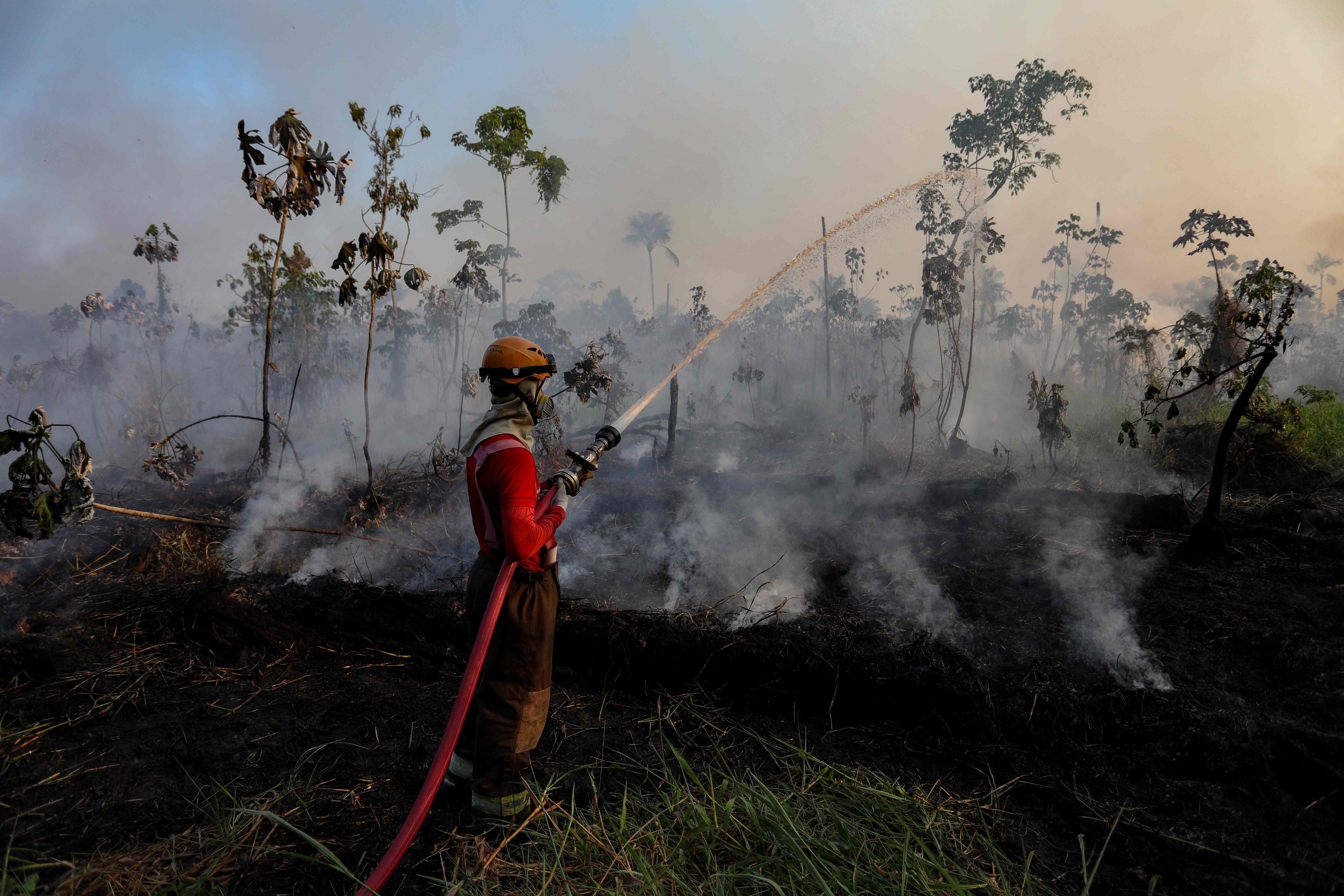Extreme Heatwave Sweeps South America as Spring Emerges with Record-Breaking Temperatures

Extreme Heatwave Sweeps South America as Spring Emerges with Record-Breaking Temperatures
As winter bids farewell to the Southern Hemisphere, South America finds itself sweltering under an unrelenting heatwave that has pushed temperatures to unprecedented levels. Over the weekend, countries including Peru, Bolivia, Paraguay, Argentina, and Brazil experienced scorching conditions, with the mercury soaring above 40 degrees Celsius (104 Fahrenheit) in many places. This exceptional heatwave, attributed to a persistent heat dome, has shattered records for September temperatures, and some all-time highs are now in jeopardy. The interplay of natural climate patterns like El Niño and the ongoing effects of human-induced global warming have intensified this extreme weather event.
Record-Breaking Temperatures and Unprecedented Heat
September typically ushers in temperate conditions in South America, but this year has defied expectations. Peru has borne the brunt of this extraordinary heat, with temperatures exceeding 40 degrees Celsius in places like Puerto Esperanza, a rarity for the country. The thermometer came within just 1 degree Celsius of its all-time highest recorded temperature of 41.1 degrees Celsius (106 Fahrenheit).
Similar record-breaking heat unfolded across other South American nations. In western Paraguay, the town of Filadelfia sweltered under a scorching 44.4 degrees Celsius (112 Fahrenheit). In Bolivia, Trinidad recorded a sweltering 39.5 degrees Celsius (103 Fahrenheit). Meanwhile, Las Lomitas in Argentina baked at 43.6 degrees Celsius (110 Fahrenheit).
However, the heatwave’s most extensive impact was felt in Brazil. On Sunday, temperatures soared to 40 degrees Celsius in 11 Brazilian states, according to the weather company MetSul Meteorologia. São Paulo, Brazil’s largest city, recorded a high of 36.5 degrees Celsius (98 Fahrenheit), marking the city’s warmest September temperature since 1943, according to INMET, the national meteorological service. These soaring temperatures culminated in São Paulo’s hottest winter in over six decades.

The Culprits: Heat Dome, El Niño, and Global Warming
The relentless heatwave gripping South America can be attributed to a complex interplay of natural and human-induced factors. A primary contributor is the heat dome, a meteorological phenomenon characterized by the buildup of high-pressure systems over an area, resulting in prolonged periods of hot weather. In this case, the heat dome has lingered for days, if not weeks, trapping hot air and causing temperatures to soar.
Furthermore, El Niño, a natural climate pattern originating in the tropical Pacific Ocean, has played a role in exacerbating the heat. El Niño events are known for disrupting weather patterns worldwide, and this year’s occurrence has intensified the already sweltering conditions in South America. It has contributed to the persistence and intensity of the heatwave.
However, perhaps the most alarming factor is the underlying trend of human-caused global warming. The emission of greenhouse gases, primarily from burning fossil fuels, has led to a gradual rise in global temperatures. This long-term warming trend has created an environment in which extreme weather events, like the current heatwave in South America, are more likely to occur. Climate scientists have repeatedly warned that these events will become increasingly common and severe if global emissions continue unabated.

Impacts of the Heatwave
The heatwave’s impacts extend far beyond uncomfortably high temperatures. One immediate concern is the heightened risk of wildfires. In Brazil, the combination of abnormally high temperatures and dry conditions has elevated the threat of forest fires. Last week, wildfires erupted in Bahia state, adding to the environmental and ecological challenges faced by the region.
The scorching conditions also take a toll on public health. Prolonged exposure to extreme heat can lead to heat-related illnesses, including heat exhaustion and heatstroke. Vulnerable populations, such as the elderly, children, and individuals with preexisting medical conditions, are at particular risk.
Agriculture is another sector deeply affected by the heatwave. Crops and livestock face stress and reduced productivity as they struggle to cope with soaring temperatures and inadequate moisture. This can result in financial losses for farmers and food security concerns for the affected nations.
Furthermore, the strain on energy infrastructure is a significant concern. As demand for cooling systems surges, power grids are put to the test, raising the risk of blackouts. This can disrupt daily life and pose additional challenges to public health and safety.
Response and Adaptation
In response to the extreme heatwave, governments and local authorities in affected regions are taking steps to mitigate its impacts. Public health agencies are issuing heat advisories and recommendations for staying cool and hydrated. Cooling centers and shelters are being set up to provide refuge for those without access to air conditioning.
Firefighting efforts are being ramped up to combat the increased risk of wildfires. Firefighters and emergency responders are on high alert, and communities are being educated on fire prevention and safety measures.
Farmers are implementing strategies to protect their crops and livestock from the heat. These measures include adjusting irrigation practices, providing shade for animals, and monitoring water resources carefully.
At the same time, discussions about long-term adaptation to rising temperatures are gaining urgency. This includes efforts to reduce greenhouse gas emissions to slow the pace of global warming. Additionally, investments in climate-resilient infrastructure, urban planning, and disaster preparedness are crucial to safeguarding communities against future heatwaves and extreme weather events.

Conclusion
The current extreme heatwave in South America serves as a stark reminder of the profound impact of climate change on our planet. While natural climate patterns like El Niño can exacerbate extreme weather events, it is human-induced global warming that provides the underlying conditions for these events to occur with greater frequency and intensity. As the world grapples with the consequences of a warming climate, urgent action to reduce emissions and adapt to changing conditions is paramount. Otherwise, the extreme heat, wildfires, and other climate-related challenges witnessed in South America may become increasingly common occurrences on a global scale.




